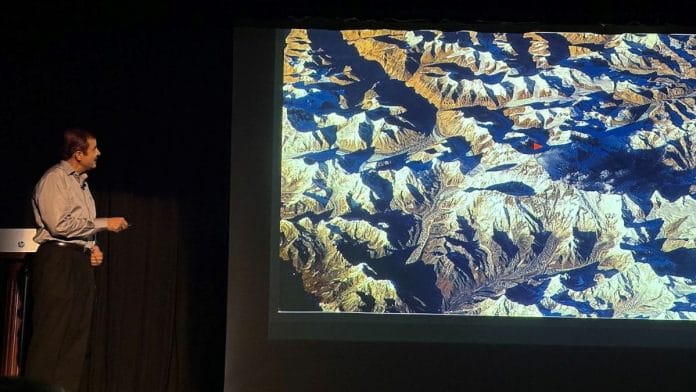New Delhi: The Mount Everest of today has become a commercialised spectacle—no longer a metaphor for human grit, determination, and curiosity. A hundred years after the most important Everest expedition in history, a group of mountaineering experts in Delhi lamented how the reasons and motivations behind exploring the peak have changed. Everest is now a mere item on our bucket lists, to be explored from the safety of a chopper.
In 1924, George Mallory and Andrew Irvine made a tragic attempt to summit the mountain. They never returned but their climb up the cold heights became more than mountaineering’s greatest mystery, inspiring explorers of the future. “I would just say that there’s no story on Everest that’s as mysterious and striking as the story of Mallory and Irvine, said Brigadier Ashok Abbey (retired) during his “illustrated lecture” held last month at New Delhi’s India International Centre.
Titled ‘Because it’s There’, the event explored pioneering expeditions to Mount Everest in 1921 and 1922, as well as Mallory and Irvine’s disappearance in 1924. The lecture was conducted by Abbey, a passionate skier and mountaineer for the past 43 years, and moderated by Sudhir Sahi, former editor of the Indian Mountaineer journal. NN Vohra, the ex-president of the Indian Mountaineering Foundation, was the guest of honour. The event was chaired by IIC president Shyam Saran.
Everest now a bucket list item
Moderator Sudhir Sahi kickstarted the event by delving into the Mallory-Irvine mystery, but eventually digressed toward his “disappointment” with today’s mountaineers. “I have always admired the sheer determination of climbers from a century ago. Their story shows unwavering commitment and strength,” he said, adding that he just doesn’t see the same “grit and fervour in climbers anymore.”
Sahi argued that mountaineering has “in some sense dissipated”, and that the whole experience has become commercialised. “We saw a photograph of a whole line, like a bus stand, of people waiting to go up the mountain…climbing Everest has become an item on the bucket list that you must tick. People even go by helicopters to be dropped,” he said.
The audience sat close to the stage, almost as if embracing it. Some attendees seemed to echo Sahi’s anger. Others expressed their appreciation with “oohs” and “aahs” when majestic photos of Everest showed up on the screen, and when Sahi read out a few lines from mountaineer John Muir’s book, The Mountains of California:
“Climb the mountains and get their good tidings. Nature’s peace will flow into you as sunshine flows into trees.”
What stood out the most, though, was how Sahi ended his part of the presentation. “It is customary to say ‘Thank You’ when ending a presentation, but I will say no thank you. Because what you see here is not seen in the world anymore.”
Also read:
The story of a tragic climb
A visual presentation by Abbey delineated the history and the aftermath of Mallory and Irvine’s brave attempt. His presentation included photographs of mountains, maps, and the evidence that appeared after the climbers’ disappearance. He then explained carefully everything that led to the event.
The 1924 expedition that included Mallory and Irvine was led by General Charles Granville Bruce. The climbers were among the few who could successfully commence their ascent from Camp IV, which was situated at the icy North Col pass, due to their mountaineering abilities.
“As they neared the final pyramid – the steep, triangular section just below the summit – [their fellow climber and English Geologist] Noel Odell spotted them at 12:50 PM [on 8 June 1924]. That was the last time Mallory and Irvine were ever seen alive,” said Abbey.
Some theories seem to suggest that they were the first to summit Everest. In 1999, an expedition led by American mountain guide Eric Simonson made a significant discovery when it found Mallory’s body. “The position of his body suggested that he had suffered a serious fall. But what adds to the mystery is that everything Mallory had placed in his bag was still with him, except for a picture of his wife, which he had vowed to place at the summit if he ever reached it,” explained Abbey.
He also explored the spurt in Everest expeditions after World War I.
“After the First World War, many young men who were out on the battlefield saw death up close, and it became a reality [for them]. Previous soldiers became comfortable with putting themselves in riskier positions. It could be to resolve survivor’s guilt as many of them lost men they knew and fought alongside.”
NN Vohra wrapped up the event by underlining the connection between climate change and mountaineering.
“Recently, I was in Nepal, trekking in the Annapurna Conservation – the same Annapurna Conservation I had visited seven years ago and where the peaks were once covered with thick snow. This time it was very depressing as only the tops of the mountains had snow…the rest was just grey rock.”
(Edited by Zoya Bhatti)






